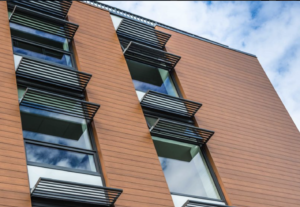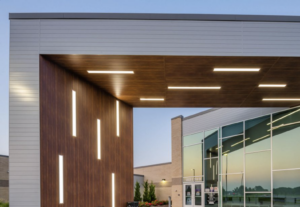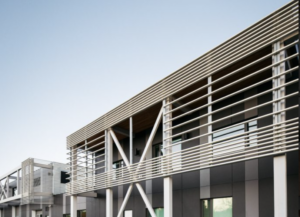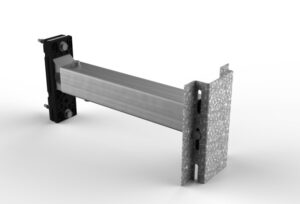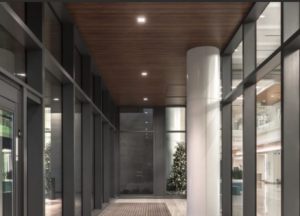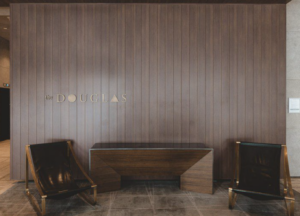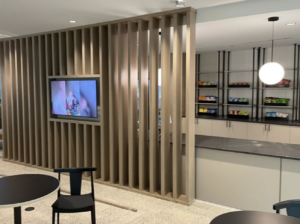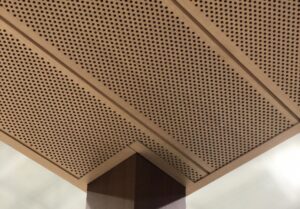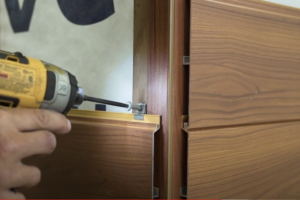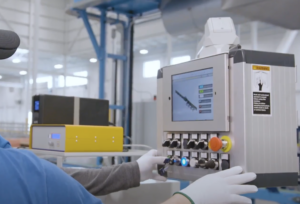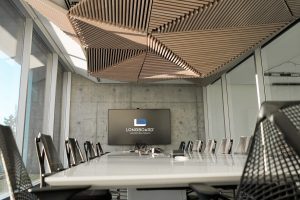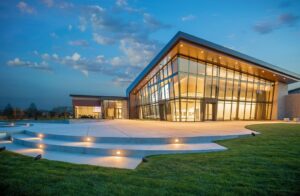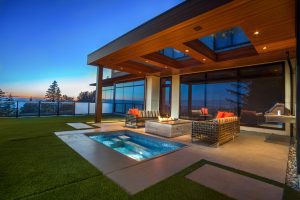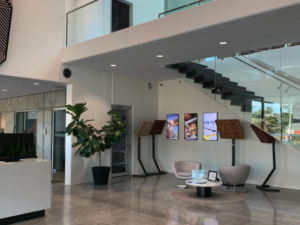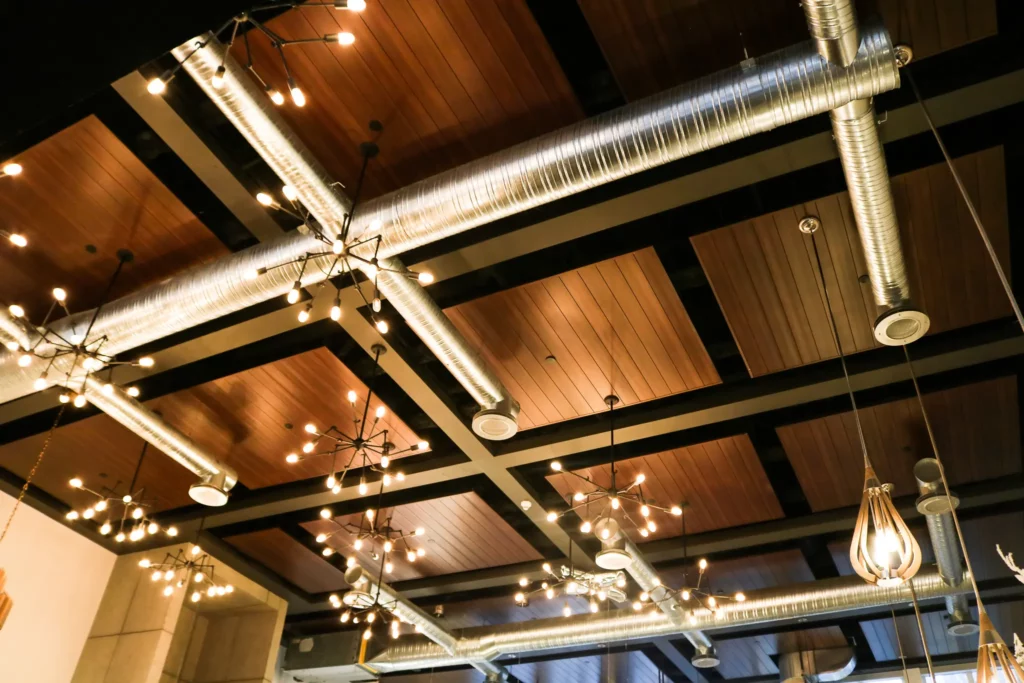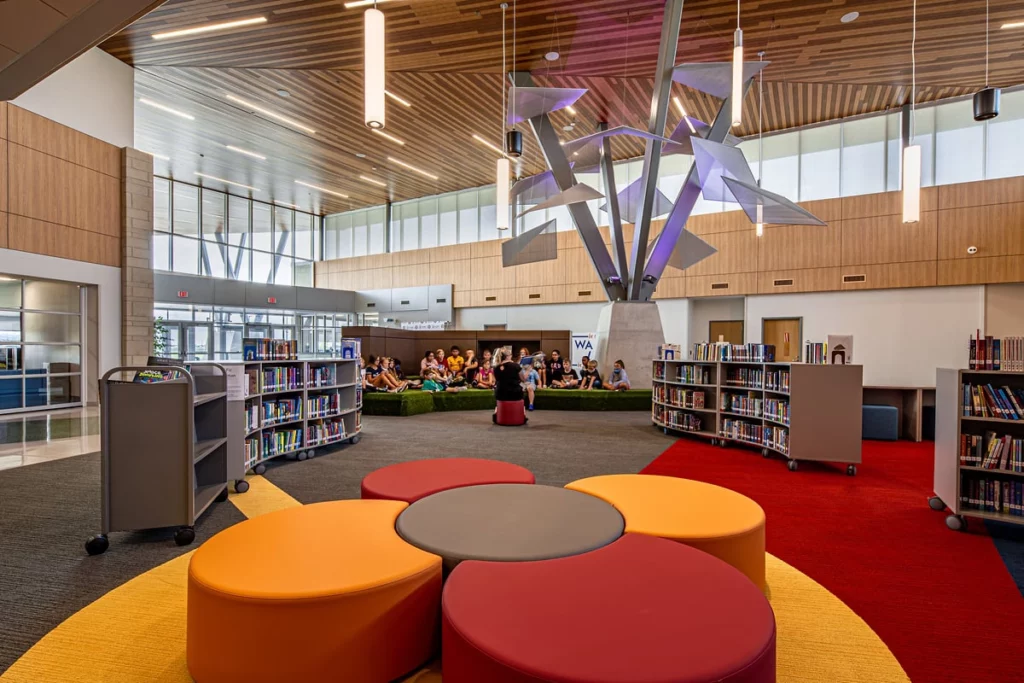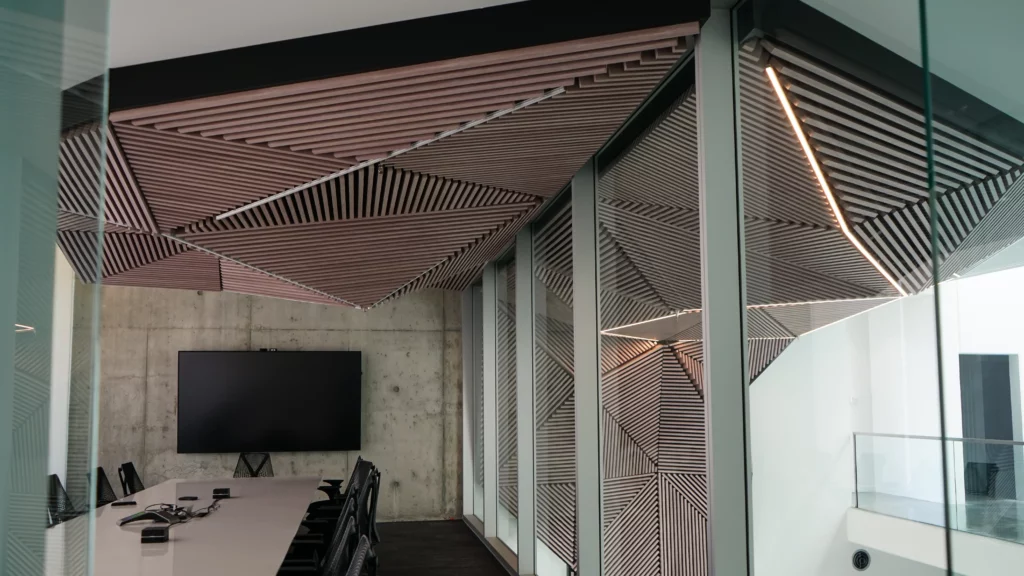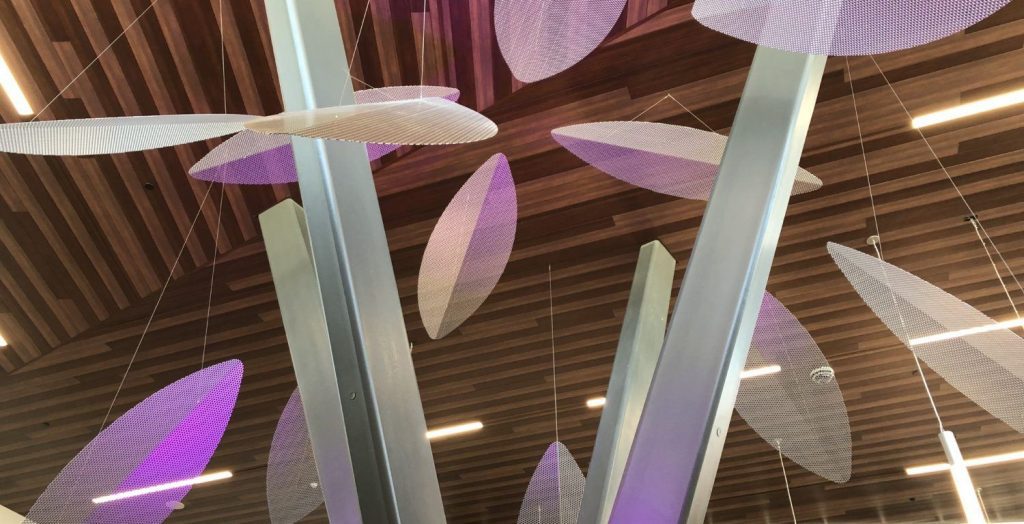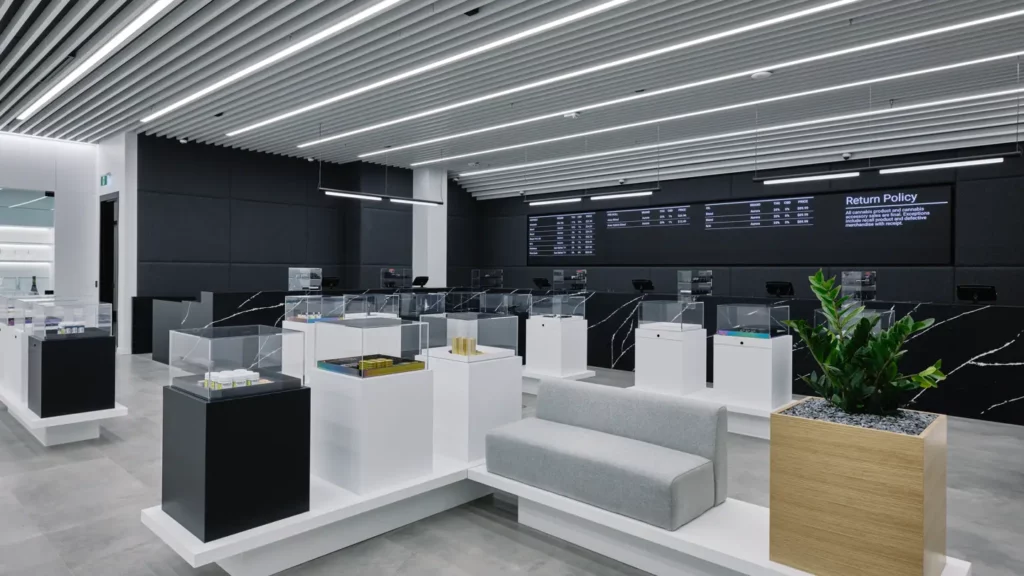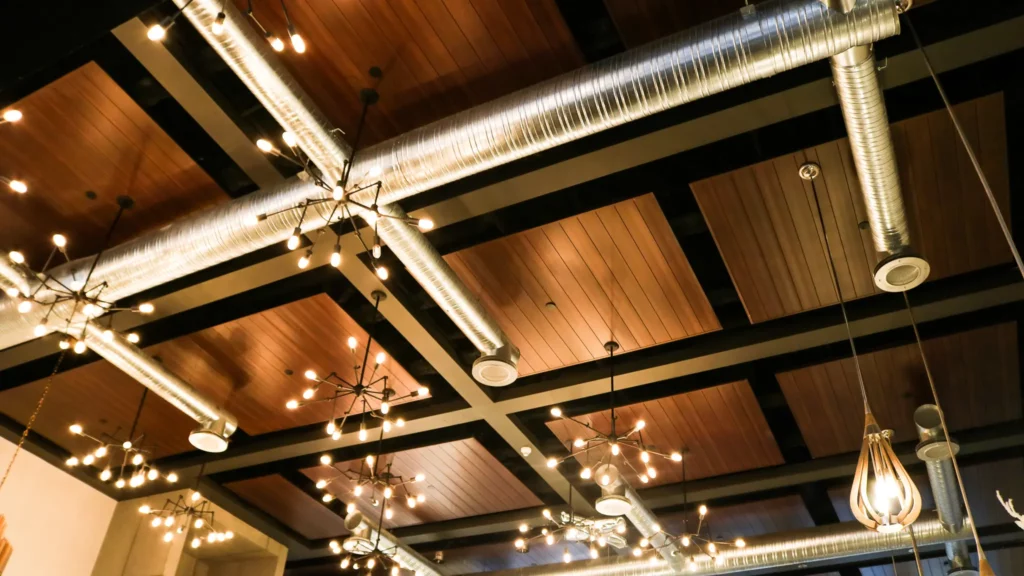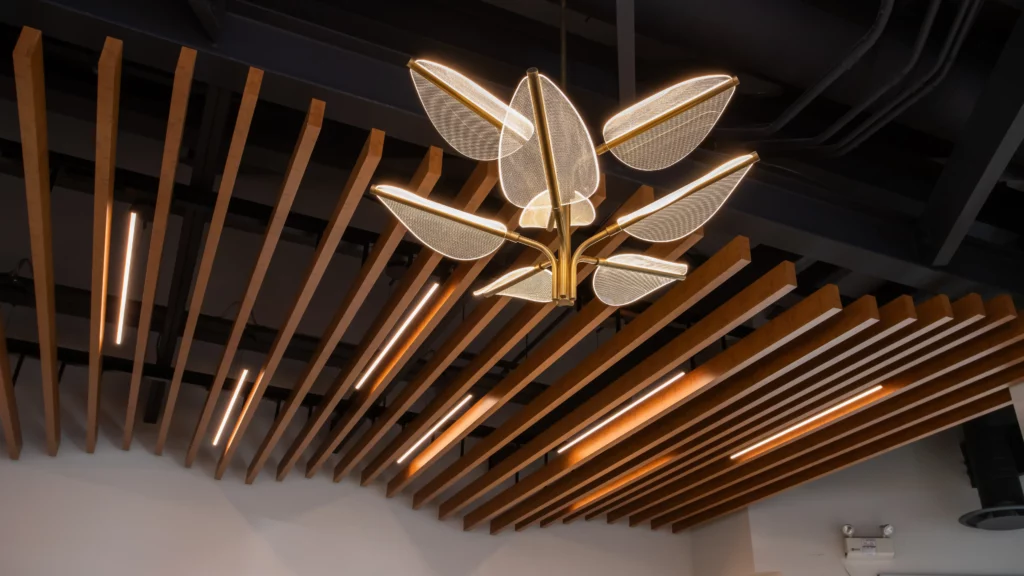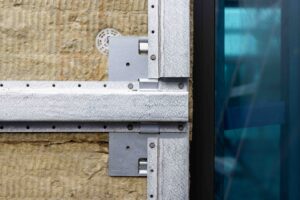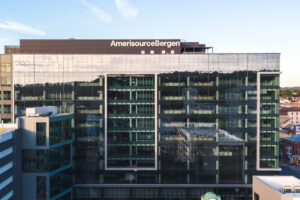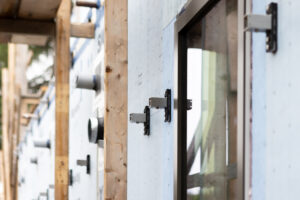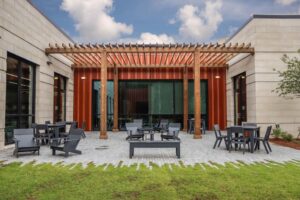Content Type:
Trends
Project Type:
Building
System Name:
Dauntless, Endura Linear, Intrepid Baffle
Installation:
Interior
In the ever-evolving world of interior design, a revolution is happening right above our heads. Ceilings, once the forgotten “fifth wall”, have become bold, statement-making canvases that elevate entire spaces.
As we venture into this new era of design, modern ceilings are no longer just about aesthetics—they’re about function, sustainability, and the seamless integration of technology. Let’s explore the top trends and design ideas that are transforming ceilings into the centerpieces of modern interiors.
In this Article ▶
- Curved Ceilings
- Sustainable Ceilings
- Smart Ceilings
- Bold Pattern Ceilings
- Subtle Texture Ceilings
- Harmonization of Mixed Material Ceilings
- Artisticly Expressive Ceilings
1. Embracing Curves: Soft Lines in Modern Ceilings
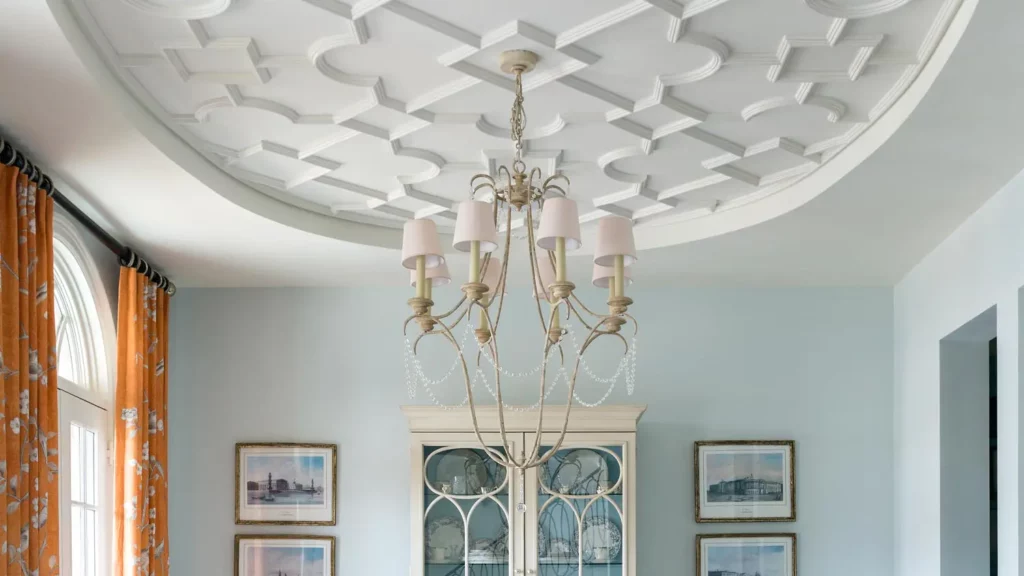
While straight lines have dominated modern design for years, we’re seeing a resurgence of curves and organic shapes in ceiling design. This trend softens spaces and can make rooms feel more welcoming and intimate.
Barrel-vaulted ceilings, once associated primarily with classical architecture, are making a comeback in modern contexts. These curved ceilings add a sense of height and grandeur to spaces, while also creating interesting acoustics.
Domed ceilings are another way designers incorporate curves overhead. Modern domes might be shallower and more subtle than their classical counterparts, but they still add a sense of drama and importance to a space. Some innovative designs are playing with asymmetrical or off-center domes for a more contemporary feel.
Organic, free-form ceiling shapes are also gaining popularity. These designs often take inspiration from nature, mimicking the curves of waves, leaves, or geological formations. Such ceilings can turn functional overhead space into sculptural art pieces.
2. Embracing Sustainability: The Rise of Eco-Friendly Ceilings
Sustainability is no longer a buzzword; it’s a necessity. Today’s ceiling designs are embracing eco-consciousness with open arms. From recycled materials to energy-efficient designs, green ceilings are making a significant impact on both the environment and interior aesthetics.
Recycled and reclaimed materials are finding new life overhead. Salvaged wood planks bring warmth and character, while recycled metal tiles add an industrial chic flair. These materials not only reduce waste but also infuse spaces with unique textures and patinas that tell a story.
Energy-efficient designs are another hallmark of sustainable ceilings. Integration of LED lighting systems into ceiling designs not only saves energy but also allows for creative illumination patterns. Some innovative ceiling systems even incorporate photovoltaic cells, turning your ceiling into a subtle energy generator.
All of Longboard’s aluminum ceiling products exemplify this trend. Made from 100% recyclable architectural aluminum and capable of integrating with energy-efficient lighting and HVAC systems, these products offer a stylish, durable, sustainable and functional option.
3. Smart Ceilings: Integrating Technology Above
In our increasingly connected world, ceilings are becoming smarter too. The integration of technology into ceiling design is opening up new possibilities for both functionality and aesthetics.
Smart home integration is at the forefront of this trend. Ceilings are now incorporating hidden speakers, fire suppression systems, adjustable lighting systems, and even climate control elements. Imagine walking into a room where the ceiling automatically adjusts the lighting based on the time of day or your preferences, or where your favorite music seems to flow from above without any visible speakers.
Projection mapping is another exciting development in tech-integrated ceilings. With advancements in projector technology, entire ceilings can become dynamic displays.
This opens up endless possibilities for commercial spaces like museums or high-end retail stores, as well as for home entertainment rooms where the ceiling can transform into a starry night sky or an abstract art piece at the touch of a button.
4. Bold Patterns: Embracing Maximalism in Ceiling Design
For those who believe more is more, ceiling design is embracing maximalism with open arms. This trend is all about making a statement and turning the ceiling into the focal point of a room.
Intricate patterns and bold geometrics are key elements of maximalist ceiling design. Think elaborate coffered ceilings with gold leaf detailing, or ceilings adorned with complex Islamic geometric patterns. These designs often draw inspiration from various cultural traditions, blending them in new and exciting ways.
Color plays a crucial role in maximalist ceilings. Gone are the days of the standard white ceiling. Now, deep earthy tones, vibrant primaries, and even multi-color gradients are making their way overhead. These colorful ceilings can dramatically alter the mood of a space, making rooms feel more intimate, energetic, or serene.
Texture is another important aspect of maximalist ceiling design. Three-dimensional tiles, ornate plasterwork, and even fabric draping are being used to create ceilings that beg to be touched (even if they’re out of reach).
5. Subtle Textures: Minimalist Ceilings with Depth
On the flip side of maximalism, we find a trend towards textured minimalism. This approach adds depth and interest to ceilings while maintaining a clean, modern aesthetic.
Subtle relief patterns are a hallmark of this trend. These can be achieved through the use of textured paint, plaster techniques, or carefully designed architectural elements. The goal is to create a play of light and shadow that changes throughout the day, adding visual interest without overwhelming the space.
Monochromatic color schemes are often used in textured minimalist ceilings. By keeping the color consistent, the focus remains on the interplay of light and texture. This doesn’t mean these ceilings are always white – soft grays, warm beiges, and even muted blues can create a serene backdrop that still draws the eye upward.
Longboard’s Linear Ceilings collection fits well into this trend, offering clean lines and uniform designs that add subtle texture and depth to minimalist spaces.
6. Fusion of Materials: Mixing Elements in Ceiling Design
The trend of mixing materials continues to gain traction, and ceilings are no exception. This approach allows for a rich, layered look that adds depth and interest to any space.
Wood and metal combinations are particularly popular. The warmth of wood contrasts beautifully with the cool, sleek look of metal, creating a balanced and inviting atmosphere. This could manifest as wooden beams interspersed with metal panels, or as a primarily metal ceiling with wooden accent elements. For those concerned with the durability & maintenance of regular wood, our faux wood finishes are perfect for achieving the same aesthetic with the reliability of architectural aluminum.
Glass is another material making its way into ceiling design, often paired with more traditional materials like plaster or concrete. Glass ceiling panels can create the illusion of skylights, bringing a sense of openness to interior spaces. When combined with lighting elements, glass ceilings can create stunning luminous effects.
Textile elements are also being incorporated into ceiling design, adding softness and acoustic benefits. Fabric-wrapped panels or hanging textile elements can be combined with hard surfaces to create a dynamic, multi-textured ceiling landscape.
7. Artistic Ceilings: Functional Art Overhead
Perhaps the most exciting trend is the transformation of ceilings into functional art pieces. This approach blends aesthetics, technology, and functionality to create truly unique overhead experiences.
Kinetic ceiling sculptures are pushing the boundaries of what a ceiling can be. These moving installations might respond to air currents, change shape throughout the day, or even be controllable by room occupants. They turn the ceiling into a dynamic, ever-changing art piece.
Interactive light installations are another way ceilings are becoming functional art. LED systems that respond to movement or sound can transform a space for different uses or moods. Some systems even allow users to “paint” their ceilings with light using smartphone apps.
Acoustic art is also on the rise. Designers are creating beautiful ceiling installations that not only look stunning but also help to control sound within a space. These might take the form of hanging elements, sculptural diffusers, or artfully arranged absorptive panels.
Conclusion: Elevating Spaces from Above
As we’ve seen, modern ceilings are breaking boundaries and proving that the sky is truly the limit when it comes to interior design. Whether you’re drawn to sustainable options, tech-savvy solutions, or bold artistic expressions, there’s a ceiling trend that can transform any room into a standout space.
From the eco-friendly options offered by companies like Longboard to the cutting-edge tech integrations and artistic installations, ceilings are no longer an afterthought in design. They’re a crucial element that can define a space, set a mood, and showcase innovation.
As you look up and imagine the possibilities, remember that your ceiling is more than just a cover—it’s a canvas, a technological interface, and a statement of your design philosophy. So go ahead, reach for the stars, and let your ceilings soar to new heights of style and innovation.
About Longboard
Longboard Architectural Products offer range of products designed to enhance both the aesthetics and functionality of exterior & interior spaces. Our ceiling systems are crafted from durable, extruded architectural aluminum with a variety of woodgrain, naturally aged metal and solid color finishes. Longboard’s ceiling solutions seamlessly integrate modern design trends, from sleek linear systems to acoustically-focused baffle ceilings. With a focus on sustainability, fire safety, and customization, Longboard empowers architects and designers to elevate their spaces from above, bringing the innovative ceiling ideas discussed throughout this article to life.

